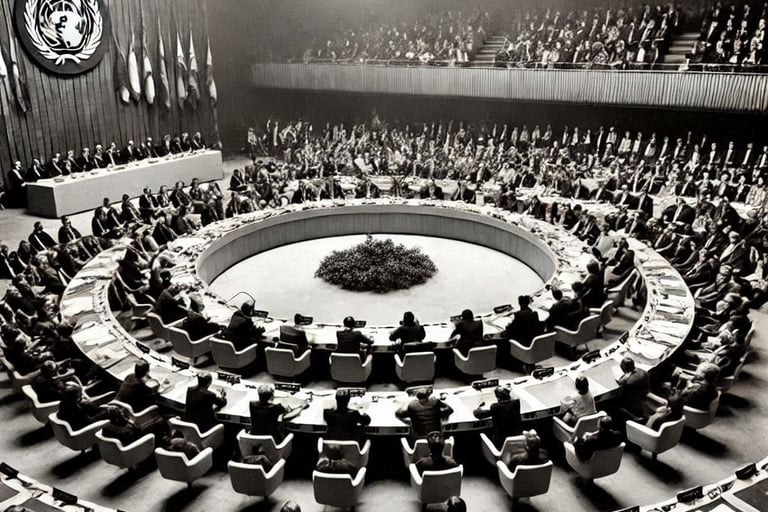Add your promotional text...
The Emergence of Environmentalism
MODULE -1: HUMAN AND THE ENVIRONMENT (Part- 2)
11/22/20244 min read


# Anthropocentric and Ecocentric Perspectives:
· Anthropocentric Perspective:
o Definition: This viewpoint places humans at the center of consideration, valuing nature primarily for its usefulness to humans.
o Key Thinkers:
§ John Locke: Advocated for the idea that nature’s value is derived from its utility to humans, emphasizing property rights and resource use for human benefit.
§ Immanuel Kant: Suggested that humans have intrinsic value, while nature has instrumental value, serving human needs and interests.
o Implications: Policies and practices often prioritize human welfare, economic development, and resource exploitation, sometimes at the expense of ecological health.
· Ecocentric Perspective:
o Definition: This viewpoint values ecosystems and non-human life forms, emphasizing the interconnectedness and intrinsic value of all living things.
o Key Thinkers:
§ Aldo Leopold: Promoted the “land ethic,” which argues for a respectful and ethical relationship with the land, recognizing the intrinsic value of all components of the ecosystem.
§ Arne Naess: Founder of the deep ecology movement, advocating for a profound respect for nature and the belief that all living beings have inherent worth, independent of their utility to humans.
o Implications: Policies and practices focus on preserving ecological integrity, biodiversity, and sustainability, often advocating for conservation and minimal human impact on the environment.
· Comparison:
o Anthropocentrism: Emphasizes human superiority and prioritizes human needs, often leading to resource exploitation and environmental degradation.
o Ecocentrism: Advocates for a holistic approach, valuing all life forms and ecosystems, promoting conservation and sustainable practices.
Ø The Club of Rome - Limits to Growth:
· Background:
o The Club of Rome: An international think tank founded in 1968, focused on addressing global challenges.
o Publication: “The Limits to Growth” was published in 1972, authored by Donella H. Meadows, Dennis L. Meadows, Jørgen Randers, and William W. Behrens III.
· Purpose:
o The study aimed to explore the implications of continued global growth in population, industrialization, pollution, food production, and resource depletion.
o It used a computer model called World3 to simulate different scenarios and predict future outcomes based on these variables.
Ø UN Conference on the Human Environment 1972:
· Overview:
o The United Nations Conference on the Human Environment was held in Stockholm, Sweden, from June 5 to 16, 1972. It was the first major international conference to focus on environmental issues.
· Significance:
o Stockholm Declaration: The conference produced the Stockholm Declaration, which outlined 26 principles for environmental management and sustainable development. This declaration emphasized the need for a balance between economic growth and environmental protection.
o Action Plan: An action plan was adopted, consisting of 109 recommendations across three main categories: global environmental assessment, environmental management, and international measures to support national and international efforts.
Ø World Commission on Environment and Development (WCED) and the Concept of Sustainable Development:
· Background:
o The World Commission on Environment and Development (WCED), also known as the Brundtland Commission, was established by the United Nations in 1983.
o It was chaired by Gro Harlem Brundtland, the former Prime Minister of Norway.
· Purpose:
o The commission aimed to address the growing concern about the accelerating deterioration of the human environment and natural resources and the consequences of that deterioration for economic and social development.
· Key Publication:
o In 1987, the WCED published its landmark report, “Our Common Future”, which introduced the concept of sustainable development.
· Concept of Sustainable Development:
o Definition: Sustainable development is defined as "development that meets the needs of the present without compromising the ability of future generations to meet their own needs".
o Principles:
§ Intergenerational Equity: Ensuring that future generations have the same opportunities and resources as the current generation.
§ Integration of Environmental and Economic Goals: Balancing economic growth with environmental protection to achieve long-term sustainability.
§ Social Inclusion: Promoting social equity and reducing poverty as part of sustainable development efforts.
Ø Rio Summit and Subsequent International Efforts:
· Rio Summit (1992):
o Official Name: United Nations Conference on Environment and Development (UNCED), also known as the Earth Summit.
o Location and Date: Held in Rio de Janeiro, Brazil, from June 3 to 14, 1992.
o Participants: Attended by representatives from 179 countries, including political leaders, diplomats, scientists, and non-governmental organizations (NGOs).
· Subsequent International Efforts:
o Kyoto Protocol (1997): An international agreement under the UNFCCC that set binding targets for industrialized countries to reduce greenhouse gas emissions.
o Johannesburg Summit (2002): Also known as the World Summit on Sustainable Development, it focused on implementing Agenda 21 and addressing new challenges such as globalization and poverty.
o Paris Agreement (2015): A landmark agreement under the UNFCCC, where countries committed to limit global warming to well below 2°C above pre-industrial levels and pursue efforts to limit the temperature increase to 1.5°C.
o Sustainable Development Goals (SDGs) (2015): A set of 17 global goals adopted by the United Nations to end poverty, protect the planet, and ensure prosperity for all by 2030.
Asst. Prof. S. B. Mache
Author & Co-founder of SkratchCodes.in










